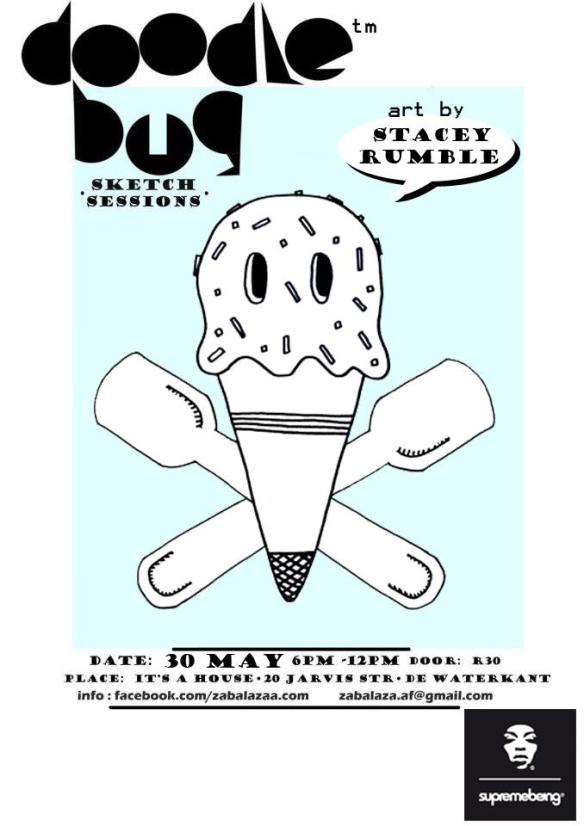Just thought I share an interview about my experience of art of after Doodlebug’s third event, which you can read here. Thanks to its a house for the feature as well as Shiba Mazaza and Atang Tshikare for organising.
Tag Archives: event marketing
Monitoring the Daisies
Please note this is a re-post from an article I wrote on 08/10/2012 on http://www.brandseye.com but the website has since changed format and my posts are no longer accessible there.
Crowdsourcing: Interview with Daniel Neville from Idea Bounty
Please note this is a re-post from an article I wrote on 12/03/2012 on http://www.brandseye.com but the website has since changed format and my posts are no longer accessible there.
BrandsEye has just established a crowdsourcing platform called BrandsEye Crowd. However, because we’re new at this business, we thought we’d speak to someone with more experience and of course share our findings with you too. Please welcome, Daniel Neville of Idea Bounty.
What is Idea Bounty?
Idea Bounty is an innovative ideas-generation platform for the marketing communication industry. We focus on coming up with fresh and innovatinve marketing and communications ideas and concepts for our clients. A big thing to note is that our briefs only look for ideas not finished products like Jovoto does for example.
What need does the business solve?
It’s becoming increasingly difficult for brands to come up with new fresh and original ideas from traditional sources, especially since the speed at which these ideas need to be sourced is increasing exponentially. Those that still use traditional methods of sourcing ideas, find they’re very costly and often a little slow. Idea Bounty offers a new and innovative way of sourcing fresher ideas thought still leaving the client with control of the final product.
Where can crowdsourcing be applied in business?
Everywhere! Idea-generation and marketing, problem-solving, R&D, product dev, simple suggestion boxes, micro-tasking and crowdfunding for projects like Kickstarter does. It’s popping up more and more in business in interesting ways.
Who are the big names in the industry?
There’s Crowdspring, Springleap and 99 Designs (who all do variations of graphic design). Threadless – was the first business to make money of crowdsourcing in 1999. There’s also the Mechanical Turk – a micro tasking platform run by Amazon. And then of course, Jeff Howe, who coined the term ‘crowdsourcing’ in 2006.
How would you describe the greater crowdsourcing industry?
By nature it’s very transparent, and practitioners tend to group together, via platforms like the The Daily Crowdsource,Crowdsourcing.org (where members only include practitioners). It’s encouraging to see that even competing platforms are intent on creating a sustainable industry so they’re communicating intensely.
So who owns the ideas/the solutions?
It differs between platforms. At Idea Bounty, the creatives own the idea until it’s bought by the client for a bounty. Idea ownership then transfers from the creative to the client.
What happens if they don’t win? How do they benefit from the process?
Interestingly enough money is only #3 on people’s incentives to participate. For the most part our members are looking for exciting new challenges to take part in and everyone wants to, or thinks they can come up with a better ad than the next guy. Idea Bounty also has a significant number of community members (just over 455) who work professionally in the marketing communications industry which gives them the opportunities to work on brands other than their current clients.
Students are also a big part of the community, often using Idea Bounty as a way to gain experince and build up a portfolio. Then you have your stay-at-home moms who just want something fun to do. The average time spent on an idea is only 30minutes, so the risk vs. reward is very low.
Crowdsourcing = Lots of people, working on ideas, separately? Wouldn’t the problem solving process be better if they could feed off each other’s ideas and produce one big one?
On average, crowds can be very ‘dumb’ when attempting to make collective decisions. As a group they’ll offten tend to settle for the lowest common denominator. That’s why voting systems often cause issues – in general an average idea will win as the truly fresh ones have a harder time being noticed. Individuals have ideas, not crowds. Crowdsourcing broadens the scope for ideas.
Finally, what’s the coolest crowdsourcing application/project that you’ve come across?
The Pepsi Refresh Project and Iceland’s Crowdsourced constitution. Also, India’s used it to clamp down on traffic violations, where citizens take and upload photos of offenders which the authorities follow up on. Similarly, a small municipality initiative in the UK, helps fix potholes and broken streetlights. It’s easier to bring about service delivery using a crowdsourced process, because authorities don’t have to find anomalies themselves.
